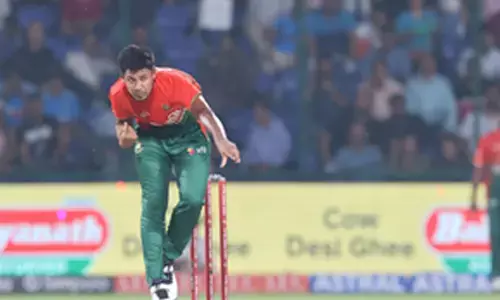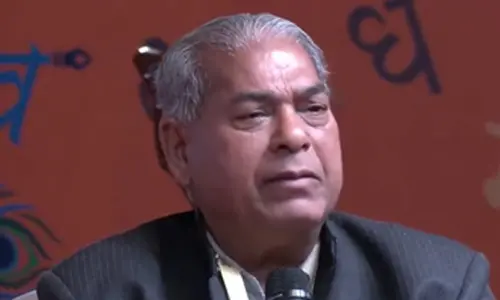Sohrab Modi: The voice that brought history to life in Hindi cinema

On November 2, 1897, Sohrab Merwanji Modi was born in Bombay, marking the beginning of a remarkable journey that would see him become a significant figure in Indian cinema.
On November 2, 1897, Sohrab Merwanji Modi was born in Bombay, marking the beginning of a remarkable journey that would see him become a significant figure in Indian cinema. An indifferent student with a particular aversion to history, he was encouraged by his school principal to pursue a career in politics or acting, thanks to his commanding personality and resonant voice. Ironically, it was through his cinematic endeavors that Modi would ultimately educate audiences about India’s rich historical tapestry, portraying iconic figures from Raja Porus to Rani Lakshmibai.
Throughout his career as an actor, director, and producer, Modi specialized in grand epics, comparable to the works of Hollywood legends such as D.W. Griffith and Cecil B. DeMille. Despite a modest filmography—approximately 30 acting appearances and 26 films directed or produced—his contributions are celebrated as classics of Hindi cinema.
Sohrab Modi’s early life was shaped by his family’s roots in Rampur, where his father served the Nawab. This upbringing enabled him to master both Hindi and Urdu. His foray into films began in his teenage years when he and his brothers organized film screenings across central India during World War I. In the 1920s, he founded a drama company, which later evolved into his film production house, Minerva Movietone, in the mid-1930s.
Modi’s theatrical background influenced his early films, starting with adaptations of Shakespeare, including “Khoon Ka Khoon” (1935) and “Said-e-Havas” (1936), which were recordings of stage performances. His first original film, “AtmaTarang” (1937), was inspired by the teachings of Swami Ramakrishna Paramhans but initially flopped at the box office. Despite this setback, Modi’s resilience shone through when he received encouragement from four Bombay High Court judges who praised his work.
He continued to create socially relevant films, with titles like “Jailor” (1938), later remade in 1958, “MeethaZahar” (1938), tackling alcoholism, and “Bharosa” (1940), which delved into taboo subjects like illicit relationships and incest. Modi recognized the power of cinema to address social issues and championed women’s rights to divorce while critiquing outdated traditions and social hierarchies.
However, it was his historical dramas that garnered him widespread acclaim, beginning with “Pukar” (1937), set in the Mughal era, where he played Sangram Singh, a loyal Rajput nobleman. This was followed by “Sikandar” (1941), where he portrayed Raja Porus against Prithviraj Kapoor’s Alexander, and continued with films like “Prithvi Vallabh” (1943) and “Jhansi ki Rani” (1952), India’s first technicolor film.
Modi’s oeuvre also featured “Nausherwan-E-Adil” (1957), set in ancient Persia, and mythological films such as “Narasimha Avatar” (1949) and “Kundan” (1955). His portrayal of the poet Mirza Ghalib in “Mirza Ghalib” (1954) revitalized interest in the renowned poet, thanks in part to the enchanting melodies of Suraiya and iconic singers like Talat Mehmood and Mohammad Rafi.
Among his notable contributions to cinematic storytelling, Modi pioneered the technique of “verbal confrontation,” famously showcased in “Sikandar,” where the lead characters engage in a dramatic rhetorical duel. This trend continued in Bimal Roy’s “Yahudi” (1958), where he played Ezra, a character that showcased his vocal prowess against the backdrop of Dilip Kumar’s heroics.
Modi’s final film appearance was in “Razia Sultana” (1983), where he played a wizened wazir. Even in his 80s, he remained eager to continue his film career, although the ravages of time and illness had begun to affect his once-magnificent voice. His wife, Mehtab, often remarked on his singular passion for filmmaking, underscoring the depth of his commitment to the art.
Sohrab Modi’s legacy endures not just through his films but also as a testament to the transformative power of cinema to narrate history and instigate social change, leaving an indelible mark on Indian cultural history.
















